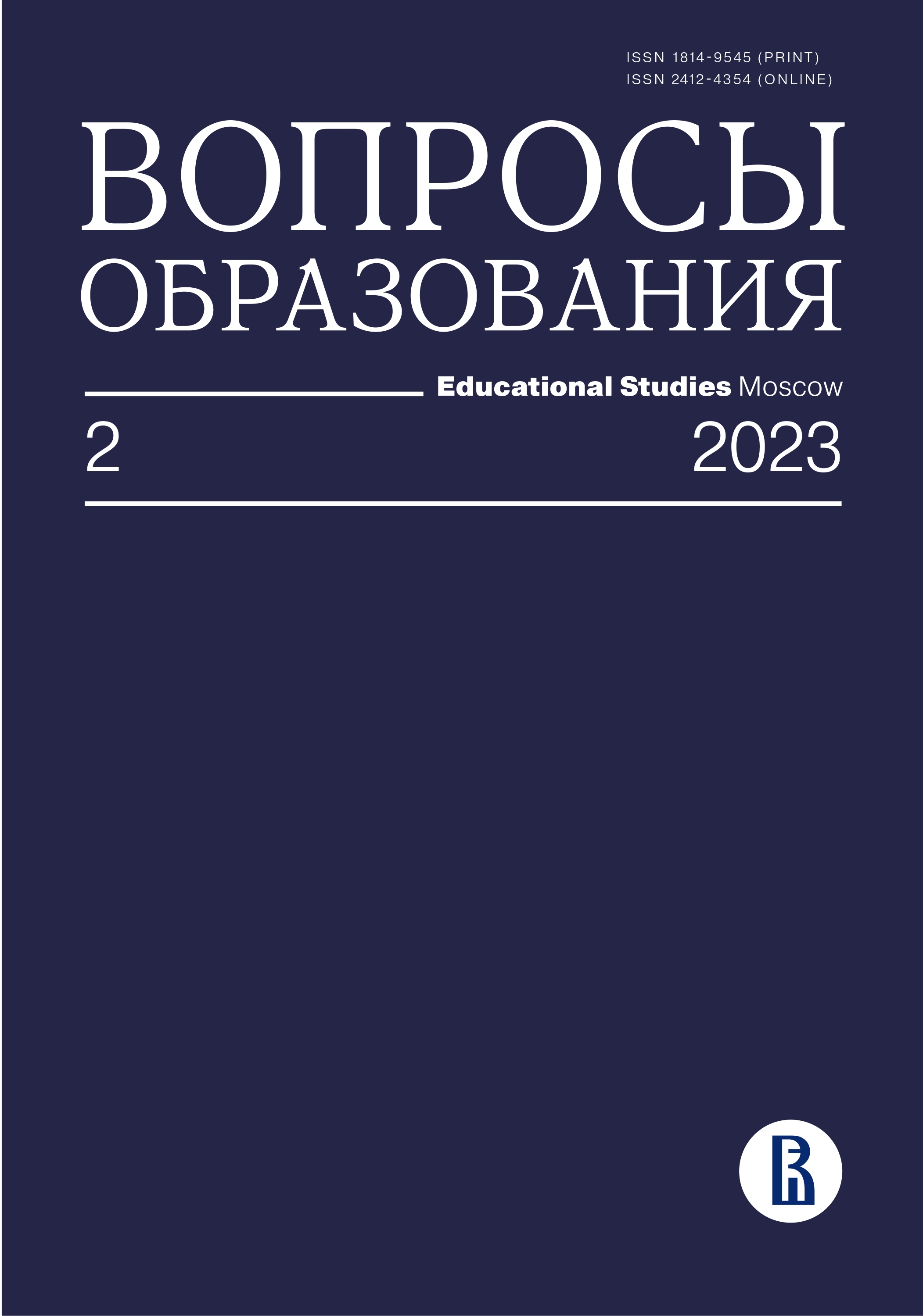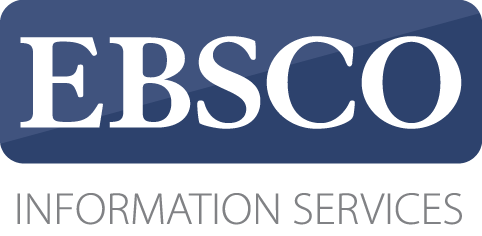Hybrid Learning: Russian and International Practice
Abstract
The paper delivers the results of the study analyzing the established advanced practices of combining distance and face-to-face forms of learning in higher education. The key criterion for hybrid learning is the ratio of synchronous and asynchronous online formats in the learning process, and its essential basis - the learner's agency. The praximetric analysis of the sources and cases of foreign and Russian universities resulted in peculiarities of hybrid learning models. In-depth interviews with representatives of 14 universities allowed us to specify organizational and didactic features of the hybrid learning as well as its advantages and its limitations. The geography of respondents from foreign universities (Harvard Business School, Stockholm School of Economics, University of Arizona) and leading Russian universities (St. Petersburg State University, ITMO University, Higher School of Economics, Tomsk State University, Moscow City University, Ural Federal University, Moscow School of Management SKOLKOVO, Skolkovo Institute of Science and Technology, University of Tyumen) makes the study representative. Based on the comprehensive analysis of the interviewees' answers, the authors consider the hybrid format not as a universal solution for higher education, but as an opportunity to solve specific educational goals, individualize learning and attract new target groups. The study focuses on the flexible hybrid format (HyFlex), which gives students the choice of attending the class on campus (face-to-face), participation of classes via videoconferencing, or studying the course completely asynchronously, i.e., from class recordings and other materials.
Downloads
References
Abramova M.O., Barannikov K.A., Gruzdev I.A., Zhikharev D.A. et al. (2021) Kachestvo obrazovaniya v rossijskikh universitetakh: chto my ponyali v pandemiyu: Analiticheskiy doklad [Quality of Russian University Education: What Have We Understood in Pandemic Period: Analytical Report]. Tomsk: Tomsk State University.
Alammary A., Sheard J., Carbone A. (2014) Blended Learning in Higher Education: Three Different Design Approaches. Australasian Journal of Educational Technology. vol. 30, no 4. pp. 440–454. https://doi.org/10.14742/ajet.693
Alkanova O.N., Ananin D.P., Bajzarov A.E., Barannikov K.A. et al. (2022) Belaya kniga. Gibridnoe obuchenie [White Book. Hybrid Learning]. Moscow: Grin Print.
Allen I., Seaman J. (2010) Class Differences: Online Education in the United States. Needham, MA: The Sloan Consortium. Available at: https://files.eric.ed.gov/fulltext/ED529952.pdf (accessed 12 June 2023).
Allen I.E., Seaman J., Garrett R. (2007) Blending in: The Extent and Promise of Blended Education in the United States. Needham, MA: Sloan Consortium.
Ananin D.P., Barannikov K.A., Strikun N.G., Suvirova A.Yu. (2023) Lost and found: prepodavateli vuzov ob izmenenii kachestva obrazovaniya [Lost and Found: University Teachers about the Change of Higher Education Quality]. University Management: Practice and Analysis, vol. 27, no 1, pp. 12–22. https://doi.org/10.15826/umpa.2023.01.002
Ananin D.P., Kashkarova E.V. (2022) Modeli i didaktika gibridnogo obucheniya [Models and Didactic Practicies of Hybrid Teaching]. Tomsk: Tomsk State University. Available at: http://docs.io.tsu.ru/wordpress/wp-content/uploads/modeli-i-didakticheskie-praktiki-gibridnogo-obucheniya.pdf (accessed 30 January 2023).
Ananin D.P., Strikun N.G. (2022) Gibridnoe obuchenie v strukture vysshego obrazovaniya: mezhdu onlain i oflain [Hybrid Learning in Higher Education: Between Online and Offline]. Prepodavatel XXI vek, vol. 4, part 1, pp. 60–74. https://doi.org/10.31862/2073-9613-2022-4-60-74
Baidikova N.L. (2020) Tsiklichnaya model' smeshannogo obucheniya: tekhnologicheskiy podkhod [Cyclic Model of Blended Learning: Technological Approach]. Scientific and methodological electronic journal "Koncept", vol. 1, pp. 39–50. https://doi.org/10.24411/2304-120X-2020-11004
Barannikov K.A., Karlov I.A., Leshukov O.V., Nazajkinskaya O.L., Sukhanova E.A., Froumin I.D. (2020) Uroki “stress-testa”: vuzy v usloviyakh pandemii i posle nee [Lessons of “Stress-Test”: Higher Educational Institutions in the Pandemic and Afterwards]. Available at: https://www.hse.ru/data/2020/07/06/1595281277/003_Доклад.pdf?ysclid=lj1kwafpps605669965 (accessed 18 June 2023).
Barber M., Donnelly K., Rizvi S. (2013) An Avalanche is Coming. Higher Education and the Revolution Ahead. London: The Institute for Public Policy Research.
Beatty B.J. (2019) Hybrid-Flexible Course Design: Implementing Student-Directed Hybrid Classes. EdTech Books. https://doi.org/10.59668/33
Bernard R.M., Borokhovski E., Schmid R.F., Tamim R.M., Abrami Ph.C. (2014) A Meta-Analysis of Blended Learning and Technology Use in Higher Education: from the General to the Applied. Journal of Computing in Higher Education, vol. 26, no 1, pp. 87–122. https://doi.org/10.1007/s12528-013-9077-3
Berelson B. (1952) Content Analysis in Communications Research. Glencoe, IL: Free Press.
Blinov V.I., Esenina E.Yu., Sergeev I.S. (2021) Modeli smeshannogo obucheniya: organizatsionno-didakticheskaya tipologiya [Models of Blended Learning: Organizational and Didactic Typology]. Vysshee obrazovanie v Rossii / Higher Education in Russia, vol. 30, no 5, pp. 44–64. https://doi.org/10.31992/0869-3617-2021-30-5-44-64
Bryman A., Bell E. (eds) (2012) Metody sotsial'nykh issledovaniy. Gruppy, organizatsii i biznes [Business Research Methods]. Kharkov: Humanitarian Center.
Cavanagh T.B., Thompson K., Futch L. (2017) Supporting Institutional Hybrid Implementations. New Directions for Teaching and Learning, vol. 2017 (149), pp. 111–119. https://doi.org/10.1002/tl.20233
Chaeruman U. A., Wibawa B., Syahrial Z. (2018) Determining the Appropriate Blend of Blended Learning: A Formative Research in the Context of Spada-Indonesia. American Journal of Educational Research, vol. 6, no 3, pp. 188–195. https://doi.org/10.12691/education-6-3-5
Christensen C.M., Horn M.B., Staker H. (2013) Is K-12 Blended Learning Disruptive? An Introduction to the Theory of Hybrids. Available at: https://www.christenseninstitute.org/wp-content/uploads/2013/05/Is-K-12-Blended-Learning-Disruptive.pdf (accessed 19 June 2023).
Cleveland-Innes M., Wilton D. (2018) Guide to Blended Learning. Burnaby, British Columbia, Canada V5H 4M2: Commonwealth of Learning. Available at: https://oasis.col.org/colserver/api/core/bitstreams/888d37d6-2e2d-4859-940d-36df969621e5/content (accessed 19 June 2023).
Driscoll M. (2002) Blended Learning: Let’s Get Beyond the Hype. E-learning, vol. 3, no 3.
Drugova E.A., Veledinskaya S.B., Zhuravleva I.I. (2021) Razvivaya tsifrovuyu pedagogiku: vklad obrazovatel’nogo dizayna. Retsenziya na knigy: Beetham H., Sharpe R. (2020) Rethinking Pedagogy for a Digital Age [The Role of Instructional Design in Promoting Digital Pedagogy. Review of the book: Beetham H., Sharpe R. (2020) Rethinking Pedagogy for a Digital Age]. Voprosy obrazovaniya / Educational Studies Moscow, no 4, pp. 333–354. https://doi.org/10.17323/1814-9545-2021-4-333-354
Dziuban C., Graham C.R., Moskal P.D., Norberg A., Sicilia N. (2018) Blended Learning: The New Normal and Emerging Technologies. International Journal of Educational Technology in Higher Education, vol. 15, no 3, pp. 1–16. https://doi.org/10.1186/s41239-017-0087-5
Garrison D.R., Kanuka H. (2004) Blended Learning: Uncovering Its Transformative Potential in Higher Education. The Internet and Higher Education, vol. 7, no 2, pp. 95–105. https://doi.org/10.1016/j.iheduc.2004.02.001
Graham Ch.R. (2013) Emerging Practice and Research in Blended Learning. Handbook of Distance Education (ed. M.G. Moore), New York, NY: Routledge, pp. 333–350.
Graham Ch.R. (2006) Blended Learning Systems: Definition, Current Trends, and Future Directions. Handbook of Blended Learning: Global Perspectives, Local Designs (eds C.J. Bonk, C.R. Graham), San Francisco, CA: John Wiley & Sons, pp. 3–21.
Graham Ch.R., Dziuban Ch. (2008) Blended Learning Environments. Handbook of Research on Educational Communications and Technologies (eds J. M. Spector, M. D. Merrill, J. van Merriënboer, M. P. Driscoll), New York: NY: Lawrence Erlbaum Associates, pp. 269–276.
Guo P., Admiraal W., van der Rijst R. (2022) Hybrid Approaches to Teaching in Higher Education. Technical Report. Leiden: Leiden University.
Helms S.A. (2014) Blended/Hybrid Courses: A Review of the Literature and Recommendations for Instructional Designers and Educators. Interactive Learning Environments, vol. 22, no 6, pp. 804–810. https://doi.org/10.1080/10494820.2012.745420
Hinterberger H., Fässler L., Bauer-Messer B. (2004) From Hybrid Courses to Blended Learning: A Case Study. Paper presented at 6th International Conference on New Educational Environments (Neuchâtel, 26–28 September 2004).
Horn M., Staker H. (2015) Smeshannoe obuchenie. Ispol’zovanie proryvnykh innovatsiy dlya uluchsheniya shkol’nogo obrazovaniya [Blended Learning. Using distruptive innovation to improve schools]. Available at: http://imc-yal72.ru/images/1_4.pdf (accessed 17 January 2023).
Hrastinski S. (2019) What Do We Mean by Blended Learning? TechTrends, vol. 63, no 4. https://doi.org/10.1007/s11528-019-00375-5
Kaleta R., Aycock A. (2004) Getting Faculty Ready for Hybrid/Blended Teaching. Paper presented at the EduCause Annuale Conference, Denver, CO. 19–22 October, 2004.
Kiryushina M., Alekseeva Y., Rudakov V. (2023) Prepodavatel'skie praktiki sotrudnikov vuzov i nauchnykh organizatsiy [Teaching Practices of University Faculty and Researchers]. Moscow: HSE. https://doi.org/10.17323/978-5-7598-2764-1
Linder K.E. (2017) Fundamentals of Hybrid Teaching and Learning. New Directions for Teaching and Learning, vol. 2017, iss. 149, pp. 11–18. https://doi.org/10.1002/TL.20222
Margulieux, L.E., McCracken, W.M., Catrambone, R.A. (2016) Taxonomy to Define Courses That Mix Face-to-Face and Online Learning, Educational Research Review, vol. 19, no 1, pp. 104–118. https://doi.org/10.1016/j.edurev.2016.07.001
Miller A., Topper A.M., Richardson S. (2017) Suggestions for Improving IPEDS Distance Education Data Collection. (NPEC). Washington, DC: National Postsecondary Education Cooperative.
Moskal P.D., Dziuban C.D., Hartman J. (2013) Blended Learning: A Dangerous Idea? The Internet and Higher Education, vol 18, July, pp. 15–23. https://doi.org/10.1016/j.iheduc.2012.12.001
Müller C., Mildenberger T. (2021) Facilitating Flexible Learning by Replacing Classroom Time with an Online Learning Environment: A Systematic Review of Blended Learning in Higher Education. Educational Research Review, vol. 34, no 1, Article no 100394. https://doi.org/10.1016/j.edurev.2021.100394
Olapiriyakul K., Scher J.M. (2006) A Guide to Establishing Hybrid Learning Courses: Employing Information Technology to Create a New Learning Experience, and a Case Study. The Internet and Higher Education, vol. 9, no 4, pp. 287–301. https://doi.org/10.1016/j.iheduc.2006.08.001
Oliver M., Trigwell K. (2005) Can ‘Blended Learning’ Be Redeemed? E-learning and Digital Media, vol. 2, no 1, pp. 17–26. https://doi.org/10.2304/elea.2005.2.1.17
Ossiannilsson E. (2017) Blended Learning. The State if the Nation. Oslo: International Council for Open and Distance Education. https://doi.org/10.5220/0006815005410547
Raes A., Detienne L., Windey I., Depaepe F. (2020) A Systematic Literature Review on Synchronous Hybrid Learning: Gaps Identified. Learning Environments Research, vol. 23, no 4, pp. 269–290. https://doi.org/10.1007/s10984-019-09303-z
Ross B., Gage K. (2006) Global Perspectives on Blended Learning: Insight from WebCT and Our Customers in Higher Education. Handbook of Blended Learning: Global Perspectives, Local Designs (eds C.J. Bonk, C.R. Graham), San Francisco, CA: Pfeiffer, pp. 155–168.
Saichaie K. (2020) Blended, Flipped, and Hybrid Learning: Definitions, Developments, and Directions. New Directions for Teaching and Learning, vol. 2020, iss. 164, pp. 95–104. https://doi.org/10.1002/tl.20428
Scaringella L., Górska A., Calderon D., Benitez J. (2022) Should We Teach in Hybrid Mode or Fully Online? A Theory and Empirical Investigation on the Service-Profit Chain in MBAs. Information & Management, vol. 59, iss. 1, Article no 103573. https://doi.org/10.1016/j.im.2021.103573
Smith G., Kurthen H. (2007) Front-Stage and Back-Stage in Hybrid E-Learning Face-to-Face Courses. International Journal on E-Learning, vol. 6, no 3, pp. 455–474.
Smith K., Hill J. (2018) Defining the Nature of Blended Learning through its Depiction in Current Research. Higher Education Research and Development, vol. 38, no 4, pp. 1–15. https://doi.org/10.1080/07294360.2018.1517732
Ulla M.B., Perales W.F. (2022) Hybrid Teaching: Conceptualization through Practice for the Post COVID19 Pandemic Education. Frontiers in Education, vol. 7, pp. 1–8. https://doi.org/10.3389/feduc.2022.924594
Vo M.H., Zhu C., Diep A. (2017) The Effect of Blended Learning on Student Performance at Course-Level in Higher Education: A Meta-Analysis. Studies in Educational Evaluation, vol. 53, no 5, pp. 17–28. https://doi.org/10.1016/j.stueduc.2017.01.00
Whittaker C. (2013) Introduction. Blended Learning in English Language Teaching: Course Design and Implementation (eds B. Tomlinson, C. Whittaker). London: British Council.









